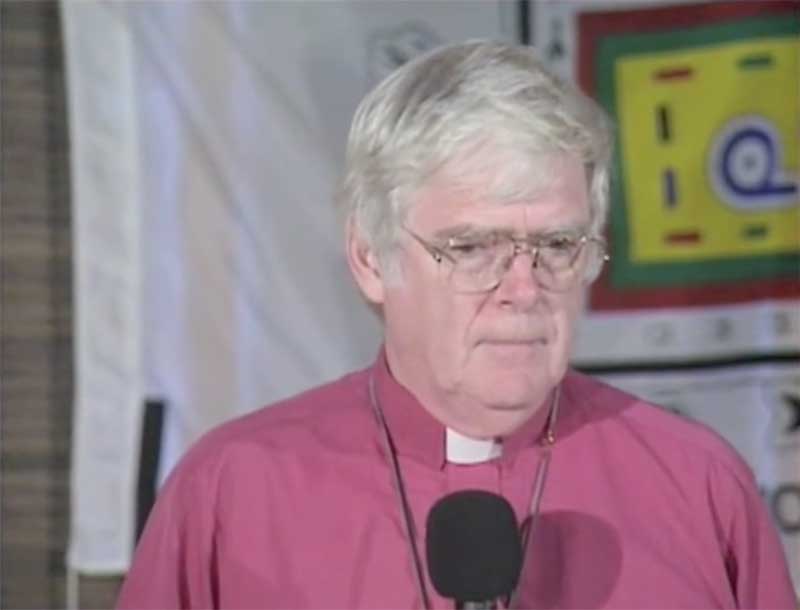Indigenous healing, reconciliation and self-determination

“I accept and I confess before God and you, our failures in the residential schools. We failed you. We failed ourselves. We failed God.”
— Apology to Native People, a message from the Primate (1986-2004), Archbishop Michael Peers, to the National Native Convocation in Minaki, Ontario (August 6, 1993)
@media only screen and (min-width: 992px) {.singlecol {padding-right: 120px; padding-left: 120px;}}
A brief history of residential institutions
Between 1820 and 1969, the Anglican Church of Canada administered more than thirty residential institutions for Indigenous children (also known as residential schools). Other Canadian churches had roles in educating Indigenous peoples, through nearly 140 institutions in total.
Residential institutions were a primary mechanism to achieve the Canadian government’s Confederation-era policies of regulating and assimilating Indigenous peoples. Through these institutions, First Nations and Inuit peoples were removed from their communities and stripped of their cultures and identities. Since the late 1980s, many survivors have come forward with stories of their experiences, including physical and sexual abuse and the impact of their loss of culture.
Through the Anglican Church of Canada’s participation in these institutions, Indigenous peoples in Canada experienced horrific trauma, pain and hurt. As a Church, we continue in our work to address the harmful legacy and intergenerational effects of residential institutions.
More history about government and church involvement in residential institutions
Journey towards reconciliation and self-determination
In 1967, the Anglican Church commissioned sociologist Charles Hendry to look at the church’s history and relationship with Indigenous peoples. This led to the Hendry report, Beyond Traplines (1969), which called for a partnership between Indigenous and non-Indigenous peoples based on solidarity, equality and mutual respect.
As noted above, Anglican archives at the national and regional (diocesan) levels gathered and organized more than 300,000 pages of records for the National Research Centre (2009), as part of the mandate of the TRC. This information included any known burial records.
In contrast to other churches involved, the Anglican Church of Canada no longer owns the property for most former residential institution sites.
- For sites still owned by the Church, individual dioceses operate their properties with autonomy.
- For sites no longer owned by the Church, many are now owned and managed by various Indigenous or other local communities. Any decision to conduct ground searches would be at the discretion of those communities.
Our journey will continue; we all have a role to play in dismantling racism (at the historic, systemic and individual levels) in Canada and around the world.
Download a more detailed historical timeline: Indigenous Peoples and the Anglican Church in Canada: Timeline of an Evolving Relationship
What you can do
Much of the history regarding Indigenous Peoples in Canada seems largely unknown to non-Indigenous millennials and older generations. However, there are many sources we can learn from, along with actions we can take.
- Explore the Reconciliation Toolkit atca.
- Watch Doctrine of Discovery: Stolen Lands, Strong Hearts and/or work through the study guide with a group.
- Participate in person or virtually in:
- Review the Truth and Reconciliation Report Calls to Action and progress made to date.
- Statistics consistently show that rates of violence against Métis, Inuit, and First Nations women, girls, and 2SLGBTQQIA people are much higher than for non-Indigenous women in Canada. Learn about the Calls for Justice (PDF) which came out of the National Inquiry into Missing and Murdered Indigenous Women and Girls (MMIWG).
- The UN Declaration on the Rights of Indigenous Peoples (UNDRIP) is the most comprehensive international human rights instrument to specifically address Indigenous Peoples’ economic, social, cultural, political, civil, spiritual and environmental rights. Visit the Faith in the Declaration website to learn more about UNDRIP.
- Give to the Anglican Healing Fund through Giving with Grace.
Additional resources
- Apology by Primate and Archbishop Michael Peers (1993)
- Acceptance of the Apology on behalf of Sacred Circle by Vi Smith, member of Gitxsan Nation and ACIP Elder (1993, forthcoming)
- Apology for Spiritual Harm and Responses, by Primate and Archbishop Fred Hiltz (Apology), and Elders at General Synod and members of ACIP (Responses, 2019)
- Reclaiming our Spiritual Wholeness: Our Journey to Self-Determination, a history of the path of Indigenous Anglicans toward self-determination
- Topahdewin: The Gladys Cook Story, the story of an Indigenous woman who was abused in residential institution, then overcame her despair to become a community leader.
- Sacred Teachings podcast
